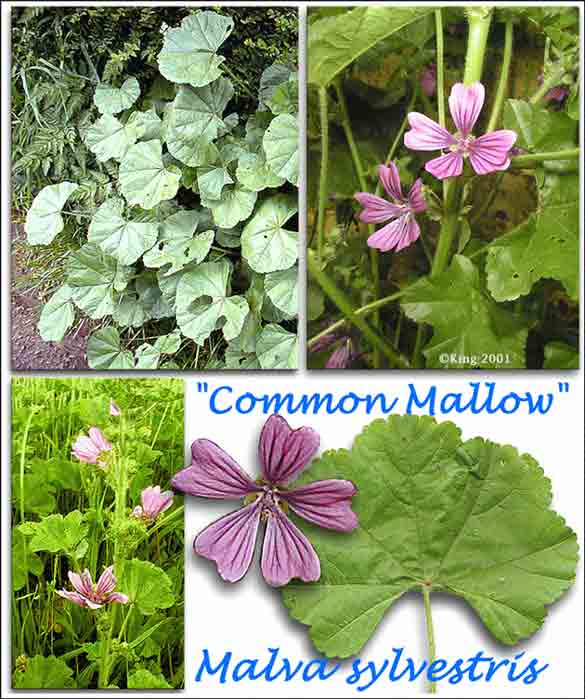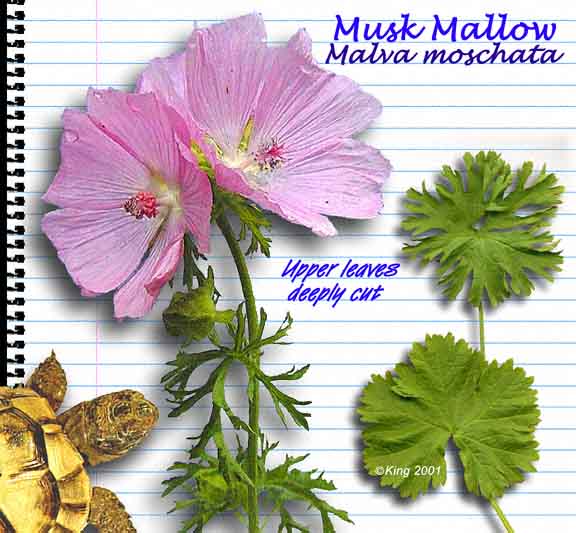|
Common
Mallow
Malva sylvestris
Height up to 1.5m
Upright or spreading perennial of grassy verges and disturbed ground.
Leaves are rounded at base but 5-lobed on stem. Purple-veined pink
flowers, 2540mm across, appear JuneOctober. Widespread and common in S
Britain but scarce elsewhere.
Musk
Mallow
Malva moschata
Height up to 75cm
Perennial of dry, grassy places. Widespread and locally common in England
and Wales but scarce elsewhere. Leaves rounded and 3-lobed at base but
increasingly dissected up the stem. Pale pink flowers, 3060mm across,
are
seen JulyAugust.
Ref:
British Wildlife Guide, Lineone.
Dwarf
mallow
Malva
neglecta
A
tiny creeping form of mallow. It
is common in most parts of Europe, including Britain, and in Western
Asia. In Egypt, especially upon the banks of the Nile, it is extensively
cultivated and used by the natives as a pot-herb.
Ref: nature1
~~~~~~~~~~~~~~~~~~~~~
Ref:
PFAF:
When grown on nitrogen rich soils (and particularly when these are
inorganic), the plant tends to concentrate high levels of nitrates in
its
leaves[76]. The leaves are perfectly wholesome at all other times.
A very easily grown plant, succeeding in ordinary garden soil[1] and in
poor
soils[238]. It prefers a reasonably well-drained and moderately fertile
soil
in a sunny position[200], where it will produce a better crop of salad
leaves[K].
Plants are hardy to about -20°c[187].
~~~~~~~~~~~~~~~~~~~~~
Malva
species are very high in Vitamin A, so avoid overdosing!
~~~~~~~~~~~~~~~~~~~~~
Tortoises
are also fond of the flowers (but not the leaves) of the larger 'Tree
Mallows', eg Lavatera rosea. |



